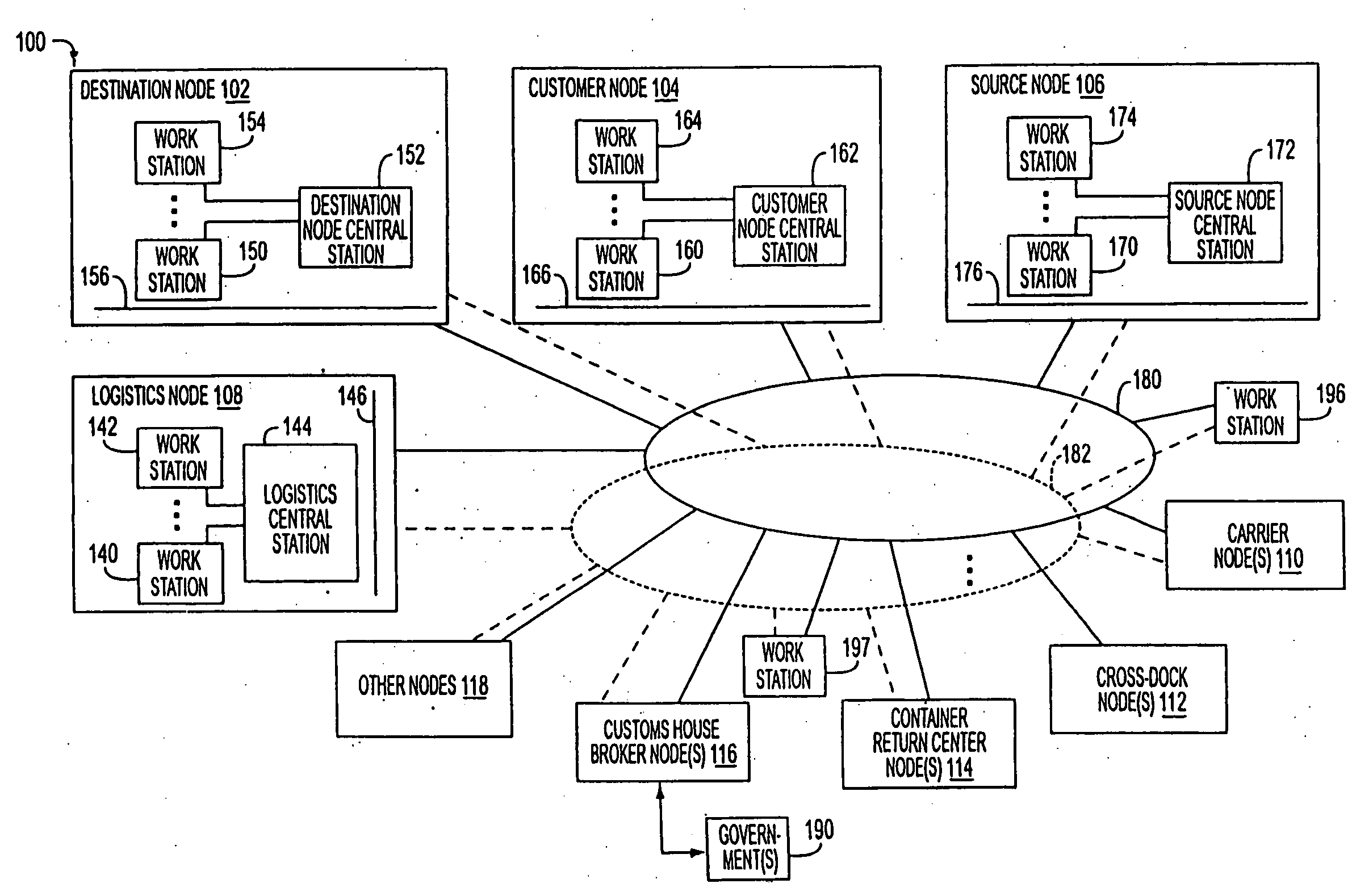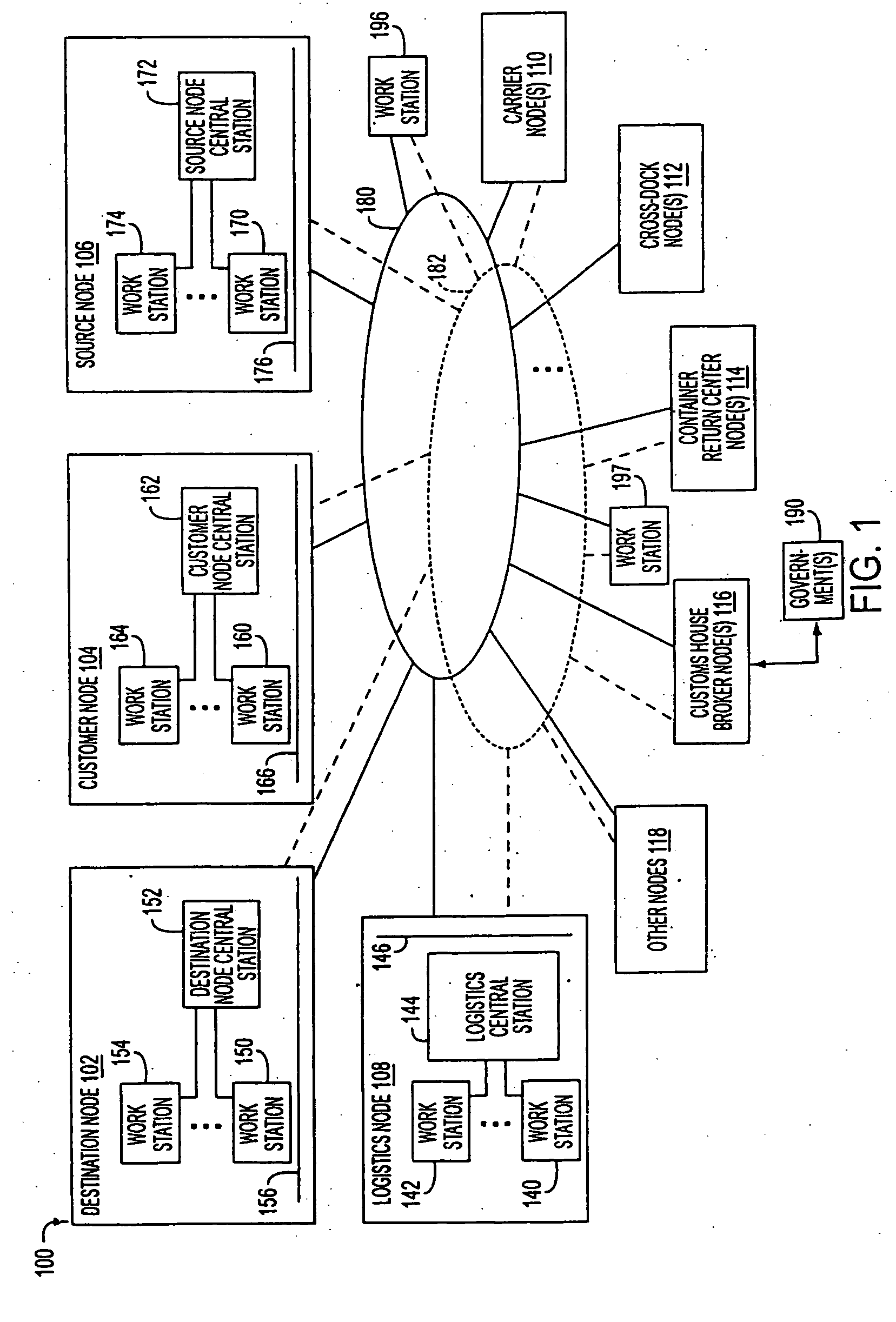Method and system for interfacing with a shipping service
a shipping service and interconnection technology, applied in the field of methods and systems for interconnection with shipping services, can solve the problems of package-centric approach to product tracking, limitations of the above-described type of tracking tool, and burden on customers
- Summary
- Abstract
- Description
- Claims
- Application Information
AI Technical Summary
Benefits of technology
Problems solved by technology
Method used
Image
Examples
Embodiment Construction
[0029] 1. Exemplary System Architecture (FIGS. 1-3)
[0030]FIG. 1 shows an exemplary system 100 that may be used to implement the principles disclosed herein. By way of overview, the system 100 includes plural nodes. As used here, a node loosely represents an “actor” involved in the distribution of a product. A node may include physical infrastructure, such as one or more physical facilities (e.g., shipping centers, manufacturing plants, etc.), as well as information technology (IT) equipment used at the facilities.
[0031] However, it should be noted that the equipment associated with a particular node may be distributed over plural sites. Further, the system 100 may permit a user who is affiliated with a particular node to use any equipment to access functionality appropriate to the user's affiliation, regardless of the location of the equipment. Accordingly, a piece of equipment owes its association with a node primarily based on the affiliation of the user that gains access to the...
PUM
 Login to View More
Login to View More Abstract
Description
Claims
Application Information
 Login to View More
Login to View More - R&D
- Intellectual Property
- Life Sciences
- Materials
- Tech Scout
- Unparalleled Data Quality
- Higher Quality Content
- 60% Fewer Hallucinations
Browse by: Latest US Patents, China's latest patents, Technical Efficacy Thesaurus, Application Domain, Technology Topic, Popular Technical Reports.
© 2025 PatSnap. All rights reserved.Legal|Privacy policy|Modern Slavery Act Transparency Statement|Sitemap|About US| Contact US: help@patsnap.com



